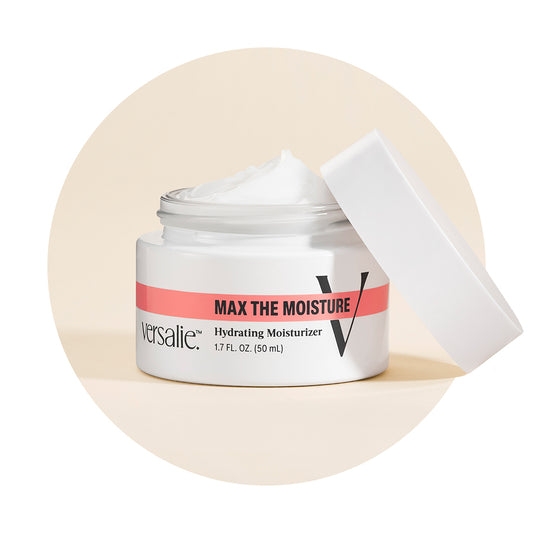As you may have already learned (on this site maybe?), menopause is when you haven’t had a period for 12 months. As you may also know, it can sometimes take years between when your period is no longer regular and when you reach menopause. This time before menopause is known as perimenopause, or sometimes called the "menopausal transition”.
Why do periods change during perimenopause?
Perimenopause typically begins in your early to mid 40s, although it can start earlier or later. It can last anywhere from a few months to several years. Before perimenopause, the changes in estrogen and progesterone levels follow a regular pattern. Ovulation (when your ovary releases an egg) occurs halfway through the cycle. If no pregnancy occurs, the period normally starts about 2 weeks later.
During perimenopause, your ovaries gradually make less estrogen and progesterone, the hormones that control the menstrual cycle. As these hormone levels are shifting, your periods during perimenopause start to do the same. The levels of estrogen and progesterone are not consistent month-to-month, so some months the ovaries may release an egg (i.e., you'll get a period) and other months, they won't (i.e., you won't get a period). That inconsistency is what also leads to more or less time between periods than you used to have.
Do periods become irregular during perimenopause?
It can vary from person to person, but the length of an average menstrual cycle (before perimenopause) is usually 24-38 days. Periods during perimenopause can be shorter or longer than your normal cycle. Sometimes, your period might be heavier or more painful than you’re used to. Other times, it might be lighter. You might also miss a few periods in a row and then have one unexpectedly. Ugh, sounds like SO much fun, right?
It can be helpful to track your perimenopausal bleeding, either in a journal or period-tracking app on your phone. If you’re in perimenopause, your periods may not be regular, but tracking can help you remember month-to-month what’s going on with it. This is helpful information, for you and for you to share with your healthcare provider. Consider tracking:
- When your period starts each month.
- How long it lasts.
- How heavy or light it is.
- Whether you have any spotting in between periods.
Tracking your periods during perimenopause can also help you discover when you’ve hit menopause (12 months straight with no bleeding).
Having irregular periods is one of the most common symptoms and signs of perimenopause. If you don’t have other classic menopause symptoms, like hot flashes or changes in mood, irregular periods can be a sign that your body is changing.
Why do I feel like I’m riding an emotional rollercoaster?
Since you often don’t know when your next period will come, it’s common to feel stressed and frustrated during this transition. This is especially true if your periods have been pretty regular most of your adult life. In addition, perimenopause can also cause you to ride a rollercoaster of emotions. During perimenopause, your hormones are fluctuating, which can cause mood swings and make you feel irritable and anxious.

How to deal with irregular periods during perimenopause
Even though irregular periods and spotting during perimenopause are normal and expected, there are things you can do to help with the symptoms that often come with them.
- Take care of yourself. You’ve heard it before and it’s still true — eat a healthy, balanced diet and get regular exercise, including strength training. This can help your body balance hormone levels and might reduce the severity of period symptoms. Research shows that exercise can help reduce the severity of period cramps. There’s also some evidence that eating a diet rich in omega-3 fatty acids, calcium, and vitamin D and low in animal fats, salt, and caffeine may help reduce period discomfort.
- Consider over-the-counter pain relievers. Non-prescription pain relievers like ibuprofen can help ease menstrual cramps and discomfort. On these products, always read and follow the product label. Talk to your healthcare provider if you have any questions.
- Think about birth control pills. Research has shown that using birth control pills or other hormonal contraceptives may help regulate periods and make symptoms like heavy bleeding and cramps less severe. Talk to your doctor about whether you might be a good candidate for oral contraception.
- Try menopause hormone therapy (MHT). Some people may benefit from MHT to help balance hormones and manage some perimenopausal symptoms, including irregular periods. MHT has been shown to help with hot flashes and vaginal dryness. However, MHT is not suitable for everyone, so talk to a healthcare provider about the potential benefits and risks.
- Look into alternative therapies. Some evidence suggests that acupuncture, yoga, and meditation can help manage stress and alleviate some of the heavy cramping and pain that sometimes comes with irregular periods.
Again, talk to your healthcare provider about these options.

How can I cope with the emotional challenges of irregular periods?
Dealing with irregular periods during perimenopause is not just about managing your physical symptoms. Emotional support is just as important. Here are some tips that may help:
- Talk to someone. Share your feelings and concerns with friends, family, or a trained therapist. Sharing your experiences may help reduce some of the emotional distress you may be feeling.
- Care for yourself. Make self-care activities a priority. Schedule time in your calendar to do activities that make you feel calm and relaxed. Some ideas include reading, taking a walk, listening to music, or taking a bath.
- Learn more. Take time to learn more about what you’re going through. Read about perimenopause, understand more about the process and why your periods are irregular. The more you know, the better you can manage your symptoms, both physical and emotional.
- Find a support group. Join a support group to talk with other people who are going through the same thing. This can often provide a sense of connection and understanding.
Should I talk to my healthcare provider about my irregular periods during perimenopause?
Yes. It’s important to have regular check-ups with your healthcare provider during this phase of life. Irregular periods and spotting can sometimes be a sign of other health issues, such as fibroids, polyps, or changes within the lining of the uterus. Your doctor can rule these out and provide ideas to help you manage your symptoms.
In the meantime, remember that while it may be a longer time than you want, this too shall pass. Your periods will eventually stop, and you’ll no longer have to worry about the frustrations involved in the unexpected. Try to be in the moment and experience this perimenopausal transition period with as much grace as you can.










1 comment
Any support groups for women going through perimenopause I’m 45 and having a hard time with this